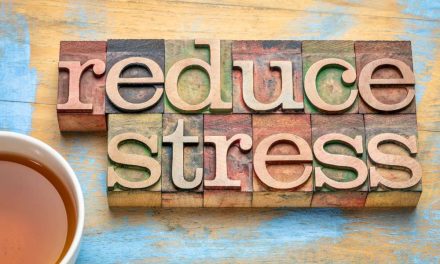One in five Canadians face emotional trauma that changes their daily life. Yet, only 30% look for professional help. When I was in this situation, I learned that healing is not always easy. But it is possible.
This article will share the 10 steps that helped me. They changed my journey from feeling overwhelmed to feeling empowered.

How to Heal from Emotional Trauma: 10 Steps to Recovery
Key Takeaways
- A structured approach like the 10 steps to recovery can reduce healing time by up to 40%.
- Personalized strategies, not generic advice, lead to lasting mental health improvements.
- Small daily actions create momentum toward overcoming trauma’s lingering effects.
- Self-compassion is a critical foundation for every stage of recovery.
- Canadian mental health resources are increasingly accessible for trauma support.
Understanding Emotional Trauma
My journey with emotional trauma showed me healing begins with awareness. It was key to see how trauma affects our feelings and actions. This was the first step in my emotional trauma healing process.
Learning to tell apart short feelings and deeper wounds was important. It helped me face what needed fixing.
Recognising the Signs
At first, I saw patterns like pulling away from friends or feeling numb in stressful times. These signs showed something deeper needed fixing. Common signs include:
- Chronic fatigue or unexplained physical pain
- Difficulty trusting others
- Flashbacks or intrusive thoughts
Identifying Personal Triggers
I found triggers can be different for everyone—like a song, a smell, or a season. Finding mine took journaling and thinking about when I felt anxious. Common triggers include:
- Past anniversary dates of traumatic events
- Places linked to the trauma
- Certain conversations or topics
Knowing these helped me take control of my healing. Small discoveries added up. They showed how recognizing patterns could move my emotional trauma healing process forward.
The Science Behind Healing
Healing starts with the brain. My journey showed me healing isn’t just about getting over pain. It’s about changing our biology and psychology.
Our brains can change even after trauma. This is called neuroplasticity. It means we don’t have to keep old patterns forever.
Studies show therapy and mindfulness change our brain activity. When I used grounding techniques, my brain’s fear center got smaller. My calm-making part got stronger. These changes take time but they happen.
- Consistent therapy builds new neural pathways.
- Mindfulness lowers stress hormones like cortisol.
- Social support strengthens emotional resilience over time.
My big moment came when I mixed science with daily habits. Strategies like journaling or breathwork really change our brain chemistry. This made my progress feel real.
Science doesn’t just tell us why. It gives us hope. Every small step in recovery shows we can change, thanks to our brain’s biology.
How to Heal from Emotional Trauma: 10 Steps to Recovery
Healing from emotional trauma is brave. These steps helped me a lot. Each one is a way to deal with trauma and learn from it.
My Step-by-Step Guide
- Start a trauma journal to track emotions and triggers daily.
- Practice grounding techniques like deep breathing when overwhelmed.
- Share your story with trusted loved ones or a therapist.
- Replace negative thoughts with affirmations: “I am safe” or “I can grow from this.”
- Create a calming space with soft lighting and comforting items.
- Engage in physical activity like yoga or walking to release tension.
- Set small daily goals to rebuild confidence and routine.
- Explore art or music to express feelings beyond words.
- Review progress weekly and adjust strategies as needed.
- Seek professional guidance when challenges feel unmanageable.
Insights from My Personal Journey
Sharing my story (step 3) was the hardest but most healing. Writing down triggers (step 1) showed patterns I couldn’t see alone. I learned that being consistent with coping mechanisms for emotional trauma is more important than being perfect.
Celebrate small victories, like a calm moment or a tough conversation. Healing isn’t always straight. But these steps help you find your way back to peace, one step at a time.
Developing a Resilient Mindset
Building resilience isn’t about ignoring pain—it’s about learning to navigate it. During my own mental health trauma recovery, I found that small mindset shifts made big differences. Every challenge became a chance to grow, not a setback.
- Reframe setbacks as lessons: Ask, “What can this teach me?”
- Practice daily affirmations to replace negative thoughts.
- Use mindfulness to stay grounded in the present.
Journaling was a powerful tool for me. Writing down fears helped me see patterns and track progress. Celebrating tiny wins—like a calm moment after anxiety—kept me motivated. Resilience grows when we face discomfort but choose to move forward.
I started by setting small, achievable goals each day. Over time, these steps built confidence.
Remember, mental health trauma recovery isn’t linear. There will be days when old patterns resurface. But a resilient mindset means acknowledging pain without letting it define you. Focus on what you can control: your next breath, your next choice, your next step forward.
Effective Coping Mechanisms for Daily Challenges
Even with progress in recovery, daily stressors can disrupt peace. Mindfulness and relaxation practices became lifelines for me during overcoming emotional trauma. These tools helped me pause, breathe, and regain control when triggers arose.
Mindfulness Techniques
Grounding myself in the present reduced anxiety. I practiced:
- Deep breathing exercises: Focusing on inhaling/exhaling for 5-10 minutes daily.
- Body scans: Mentally checking in with each part of my body to release tension.
- Journaling: Writing down thoughts without judgment to process emotions.
Relaxation Strategies
Physical calmness supported mental clarity. I found relief through:
- Progressive muscle relaxation: Tensing and releasing muscles from toes to head.
- Guided imagery: Visualizing safe spaces using apps like Insight Timer or Calm.
- Movement therapy: Gentle yoga flows or walks in nature to reconnect with my body.
Small, consistent practices turned overwhelming moments into manageable steps. These methods remain tools I revisit to stay grounded during recovery’s ongoing journey.
Emotional Trauma Recovery Strategies
Rebuilding my life after emotional trauma was tough. But I found that small, consistent actions help a lot. Routines bring stability when everything feels crazy. Here’s how I used daily habits to build emotional resilience.

emotional resilience building strategies
Starting recovery is all about making choices. A morning walk, a 10-minute meditation, or tidying my desk became must-do activities. These actions reminded me I was moving forward. Here’s what worked:
- Set micro-goals: Break tasks into 15-minute chunks to avoid feeling overwhelmed.
- Track progress: Writing in a notebook each night highlighted my growth over weeks.
- Reach out: Weekly calls with a trusted friend kept me accountable.
Creating a daily routine was more than just scheduling. I built mine around three key areas: movement, mindfulness, and meaningful tasks. Waking up at the same time, practicing deep breathing, and doing hobbies like painting or reading became my anchors. These rituals showed me that being consistent builds strength. Here’s how to build yours:
- Pick two habits to start—don’t overwhelm yourself.
- Adjust routines weekly based on what feels sustainable.
- Notice how even tiny changes reduce anxiety over time.
Every small step forward helped me face challenges better. That’s the essence of emotional resilience building: turning survival into a life of purpose, one step at a time.
Working with Mental Health Professionals
My journey toward healing from past trauma started when I found licensed therapists. They helped me deal with feelings I couldn’t handle alone. Getting help is not weak; it’s a strong move toward growth.
Therapists gave me tools just for me. For instance, they taught me to change bad thoughts. They also gave me a safe place to talk about memories without being judged. Here’s what helped:
- Weekly check-ins to track progress
- Education on trauma’s impact on the brain
- Practical exercises to build coping skills
Finding a therapist who knows about trauma was key. They showed me how to handle emotional triggers and find healing rhythms. Their sessions made me trust the healing process, even when it was hard. They turned confusion into clear steps toward recovery.
Working with experts doesn’t make pain go away. But it gives us ways to handle it. Their support is a big part of my healing journey.
Building Emotional Resilience Step by Step
Rebuilding emotional strength is not about big actions. It’s about making small choices every day. I’ve found that emotional well-being techniques work best when they’re part of our daily lives. Small steps, like taking a moment before reacting or going for a walk, make a big difference over time.
Celebrating Small Wins
- Track progress in a journal to see patterns of growth.
- Congratulate yourself for moments of calm during tough conversations.
- Share achievements with a trusted friend to reinforce positivity.
Setting Healthy Boundaries
Protecting my mental space became very important. I started by:
- Identifying what drains or uplifts my energy.
- Saying “no” without guilt when situations feel overwhelming.
- Communicating limits clearly to loved ones using “I need…” statements.
These steps are not just rules. They are tools to help us care for ourselves. Every boundary set and small win celebrated builds our resilience. It’s about showing up for ourselves every day, one mindful action at a time.
Navigating Setbacks and Staying Motivated
My trauma recovery journey showed me setbacks are normal, not failures. When things slow down or old feelings come back, it’s hard to keep going. But every time I fell, I learned to get back up stronger.

trauma recovery journey
- Track small wins: Writing down small victories helped me see progress, even on hard days.
- Lean on community: Being part of a support group through the Canadian Mental Health Association helped me find people who get it.
- Adjust expectations: Being flexible was key. If something didn’t work, I changed it instead of giving up.
Setbacks taught me to be kind to myself. I started seeing them as chances to learn, not as failures. Celebrating small things, like going for a walk or calling a friend, kept me going. It’s not about being perfect; it’s about showing up every day. Every challenge made me more determined to heal.
Cultivating Self-Compassion Throughout My Journey
Healing isn’t just about fixing pain. It’s about learning to love yourself through it. Self-compassion became my anchor during recovery. Here’s how I made space for kindness in every step:
Personal Self-Care Practices
I started small. A warm bath after a tough day. A walk in a quiet park. These acts of care reminded me I mattered. I built a routine around:
- Journaling before bed to process emotions
- Movement like yoga or dancing, even for 10 minutes
- Digital detoxes to protect mental space
Affirmations and Reflections
Replacing harsh self-talk with gentle reminders made all the difference. I’d repeat phrases like: “I am enough, exactly as I am.” Daily reflection questions guided me:
- What did I do well today?
- What small victory am I proud of?
- How can I nurture myself now?
These practices turned self-compassion into a habit. It’s not about perfection—it’s showing up for yourself like you would a friend.
Embracing New Beginnings and Growth
Every journey through emotional healing reaches a point. The past no longer defines the future. For me, this shift began with reframing the weight of my experiences into stepping stones.
Today, I see growth as a continuous choice. It’s about rebuilding identity around resilience.
Reframing Past Experiences
- Identify patterns that no longer serve you
- Journal about lessons learned instead of pain felt
- Create a “new narrative” timeline highlighting personal strengths
Discovering a Renewed Life Purpose
My path led me to volunteer at community mental health workshops. I turned my story into tools for others. Small acts of connection became proof that purpose emerges when we:
- Engage in hobbies that spark curiosity
- Seek mentorship from those who’ve walked similar paths
- Set micro-goals aligned with evolving values
Embracing renewal isn’t about forgetting—it’s about choosing. It’s about how the past informs the present. Like planting seeds in reclaimed soil, every effort toward growth nurtures roots strong enough to support new chapters.
Conclusion
My journey with emotional trauma showed me healing is about small steps and big changes. Every day, I faced triggers with mindfulness. I built routines that kept me grounded and trusted the healing process, even when it was hard.
Healing isn’t about forgetting pain. It’s about learning to move forward with it. Recovery isn’t always easy. Some days felt like progress, others like starting over.
But every step, like seeking therapy or setting boundaries, was important. What works for one person might not work for another. So, I focused on what felt right for me. Being patient and kind to myself was key.
If you’re reading this, know your path is valid. Healing is possible. Take time to reflect and reach out to professionals when needed.
Celebrate tiny victories. Every breath is a chance to grow stronger. Your journey is unique, and that’s okay. Keep moving, one day at a time.
FAQ
What are the signs of emotional trauma?
Emotional trauma shows up in many ways. You might feel sad a lot, anxious, or moody. You might also pull back from friends and family. Spotting these signs is the first step to healing.
How can I start my journey of emotional trauma recovery?
Starting to heal can seem hard. But, just taking small steps is key. Acknowledge your feelings and look for support. Journaling or mindfulness can also help.
What role do coping mechanisms play in healing from emotional trauma?
Coping mechanisms are very important. They help you deal with stress and triggers. Deep breathing, meditation, and exercise can really help your mood.
How long does emotional trauma recovery take?
Recovery time varies for everyone. It can take weeks, months, or even years. Be patient and remember that progress is not always straight.
Can I work on my emotional resilience alone?
Some people heal on their own. But, working with mental health pros can offer extra help. Mixing self-help with professional advice can speed up healing.
Why is self-compassion important in overcoming emotional trauma?
Self-compassion is key because it lets you be kind to yourself. Practicing self-care and reflection helps heal and grow. It’s a big part of recovery.
How do I navigate setbacks during my healing journey?
Setbacks are normal. Seeing them as chances to grow can keep you going. Having a strong support system also helps stay focused on recovery.
What are some practical steps to incorporate daily routines in recovery?
Daily routines give structure and stability. Start with small tasks and add self-care and reflection activities. It helps build emotional strength.
How can I seek professional help for emotional trauma?
There are many ways to get help, like therapists or support groups. Look for local resources and find therapy that fits your needs.
What positive outcomes can I expect from healing from emotional trauma?
Healing can make you more resilient and improve your mental health. It can also help you form better relationships. Finding new purpose in life is a big part of healing.





